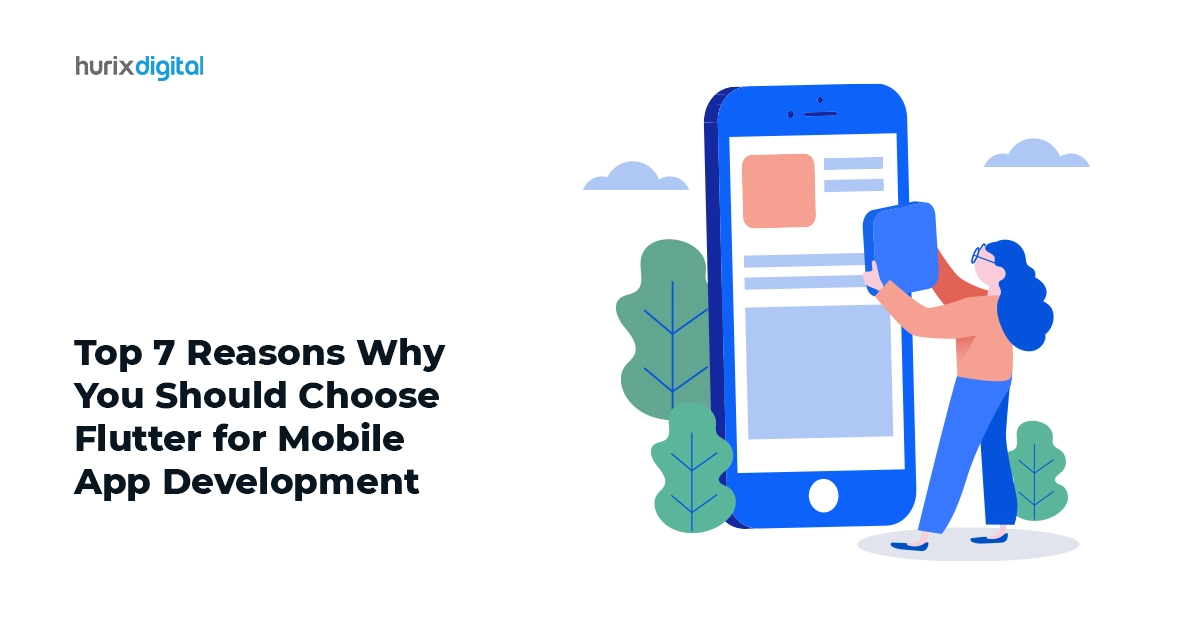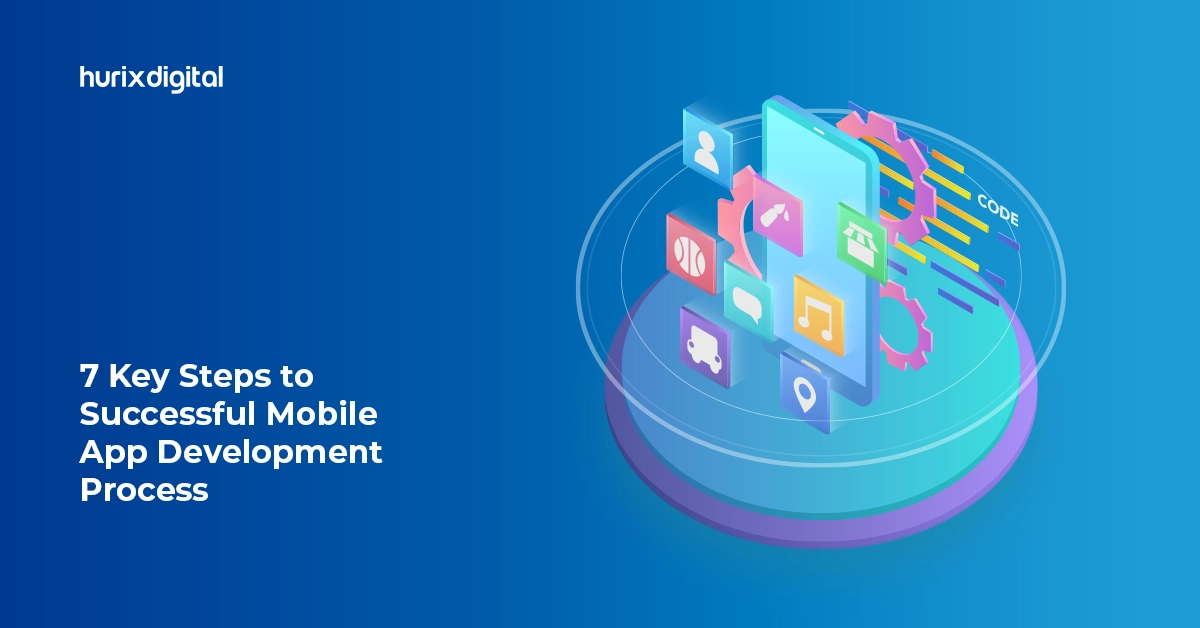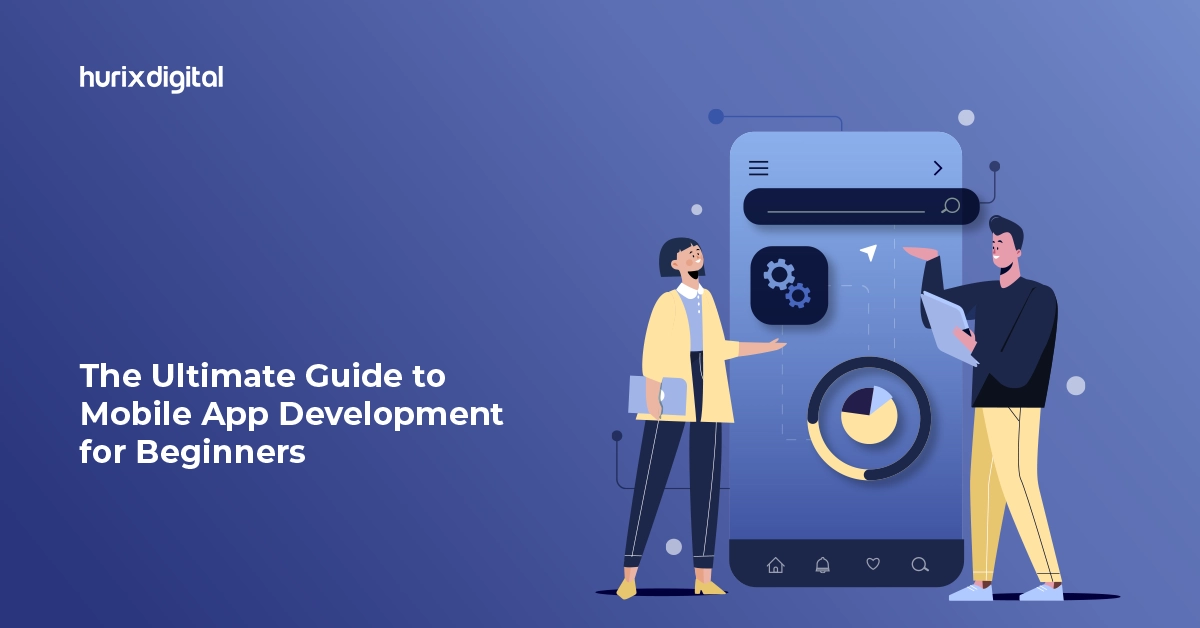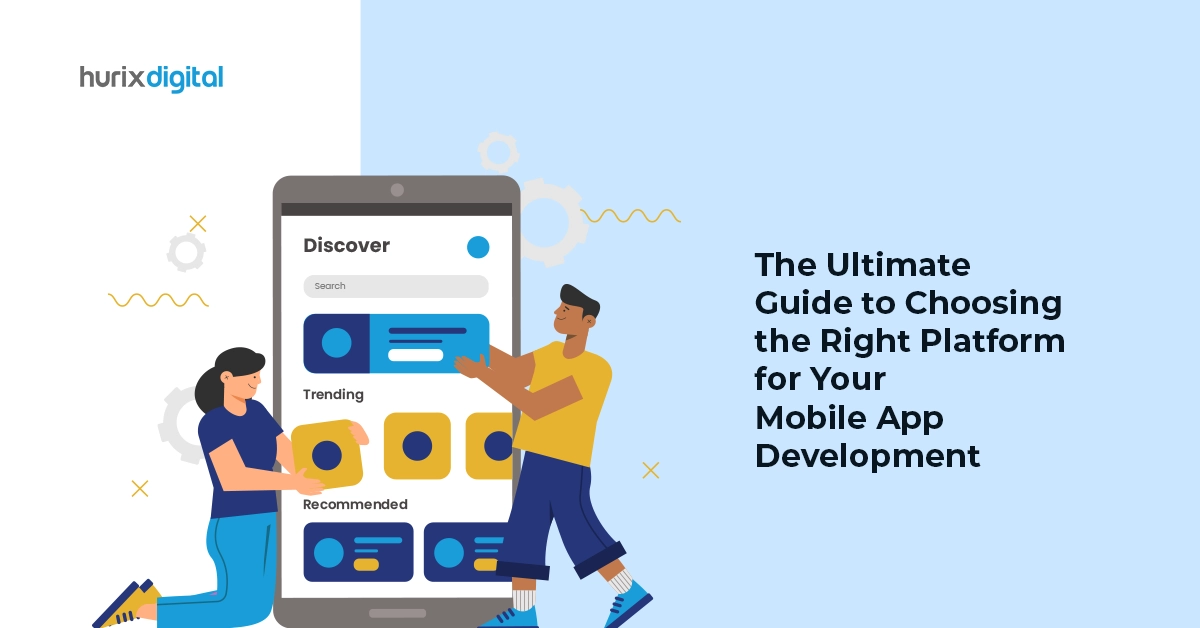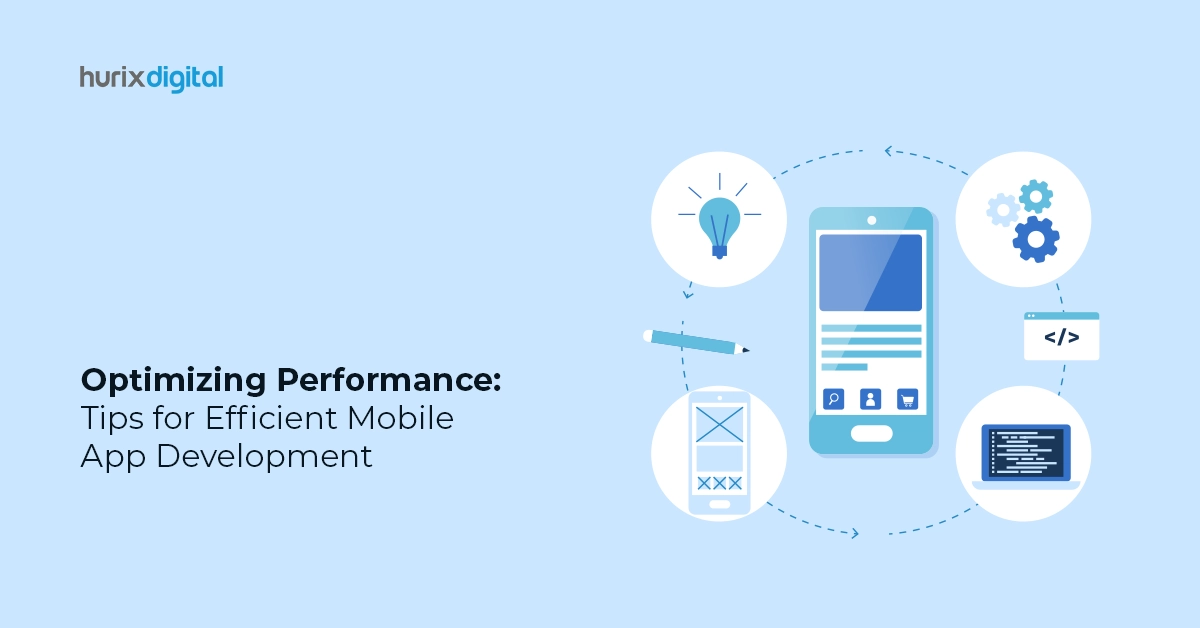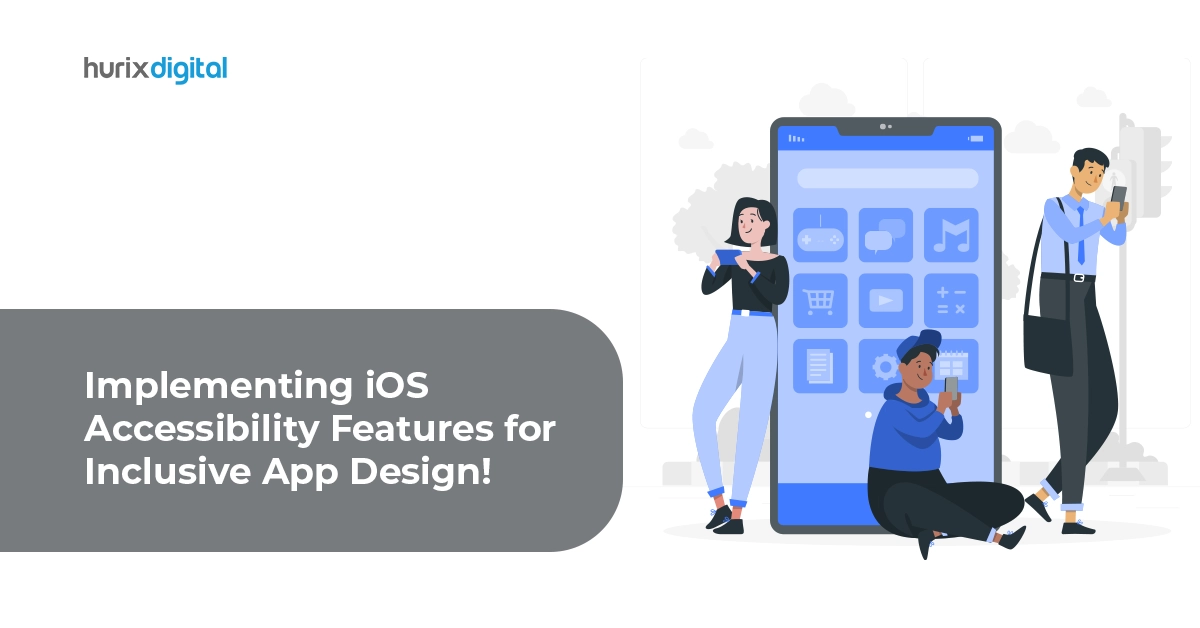Summary
This blog post explores the top 7 reasons to choose Flutter for mobile app development. It highlights the strengths and support of the Flutter community, the flexibility of the core elements, and the integration with native Functionality.
Flutter is a popular cross-platform development framework. Developed by Google, Flutter app development helps to write code once and deploy apps to Android and iOS.
The framework was first released in 2015 under the name Sky and later changed to Flutter. It is built on Dart, a programming language that is primarily composed of C and C++. This provides platform-specific SDKs for iOS and Android to developers, providing the entire development process and the finished product a native feel. With the release of Flutter from beta in 2018, developers could now fully savor the experience of working with a stable version of the framework.
This blog post explores the top 7 reasons to choose Flutter while building mobile apps in 2024.
Table of Contents:
Top 7 Reasons to Choose Flutter for Mobile App Development
Below are the top 7 reasons to choose Flutter for mobile app development:
1. Community Strength and Support
The first advantage of Flutter for mobile app development is its large, growing community of developers. It has over 1,55,000 stars on GitHub.
This large community helps new Flutter developers by sharing code snippets of JavaScript Bridge, answering questions on forums, and discovering solutions to problems. There is also a network of Flutter user groups in many major cities that organize meetups and conferences.
The Flutter community continues to contribute back to the core framework. For example, in the 1.22 release earlier this year, over 6,300 issues were resolved with help from community contributions.
This level of support helps Flutter improve rapidly. Committed communities also help future-proof mobile development frameworks by ensuring they are maintained and supported for many years. Overall, being part of a large developer network lowers the risks of choosing an emerging technology like Flutter.
Also Read: How to Use Hybrid Apps to Improve Customer Engagement and Loyalty?
2. Core Elements and Widget Flexibility
At its core, Flutter App Development is based on widgets. Widgets allow developers to create each visual element on mobile as an independent, reusable component. Some common widget types include buttons, text fields, cards, and more.
This widget-based approach offers the following advantages:
- Code is organized into logical, discrete chunks that can be easily understood, modified, and tested independently.
- The widget tree structure lends well to declarative programming, enhancing code readability and maintainability.
- Complex screens can be built from simple widgets without complicated view hierarchies.
- Hot reload allows visual changes to widgets to be seen instantly without rebuilding the whole app.
Using Flutter for mobile app development, developers have a consistent, easy-to-follow method for composing app UIs that work across platforms. This simplifies development and avoids duplicating code for different device form factors.
3. Seamless Integration with Native Functionality
Despite being a cross-platform mobile development framework, Flutter allows access to core native device APIs and capabilities. This is enabled through platform channels that let the Flutter code interoperate with platform-specific implementations.
Some standard platform plugins available for Flutter include:
- Camera/Image Picking
- Location & Maps
- Notifications
- Sensors (Acceleration, Gyroscope, etc.)
- Connectivity & Battery Status
- Device Information
- App Lifecycle Control
With these plugins, Flutter apps can take photos, track location in the background, and respond to device events. They feel and perform like regular native Android languages. Plugins are also well maintained, with dozens committed weekly to the Flutter repository. So, most needed features have reliable plugin support.
4. Optimized Performance
For a cross-platform framework, Flutter provides surprisingly high performance that rivals or exceeds native Android language speeds.
Some key reasons for this include:
- Flutter renders to its own Skia graphics engine, leveraging the GPU for fast drawing.
- Hot Reload means changes can be seen instantly without recompiling/restarting the app.
- Flutter uses platform integrations rather than interpretation, avoiding redundant software layers.
- Flutter compiles efficient ARM machine code for both iOS and Android.
In benchmark tests, essential Flutter apps often have 60+ FPS, which meets the bar for smooth animations.
More complex apps can also achieve high performance by optimizing widget building and unnecessary repaints. Flutter app development’s reputation for speed and fluidity matches what users expect from native experiences.
5. Industry Adoption and Trends
Since its release in 2018, Flutter usage has increased in the industry. A 2022 survey showed that 46% of developers chose Flutter for their work. The growth shows the number of developers adopting Flutter.
- Google has used Flutter to build internal tools like ads and is continuing its development.
- Other big-name users include BMW, Equinox, Square, and Alibaba.
- An October 2021 StackOverflow survey found Flutter to be the 8th most popular framework worldwide.
- As of July 2023, there were over 1 million Flutter apps available, having doubled from 500,000 in mid-2022.
6. Efficient Lifecycle Management
Early versions of Flutter app development had no built-in way to track an app’s status during foreground/background transitions. However, support for lifecycle management is now provided through the WidgetsBindingObserver interface.
By making a StatefulWidget subclass implement this interface, developers gain callbacks for lifecycle events like:
- didChangeDependencies()
- didUpdateWidget()
- deactivate()
- dispose()
Some common use cases include stopping animations on pause, syncing data on resumes, or cleaning resources on exit. The flutter_lints plugin also checks the proper handling of these callbacks.
Combined with asynchronous programming capabilities in Dart, Flutter for mobile app development provides everything needed for building well-behaved mobile apps. Push notifications, location updates, and other ongoing tasks can run seamlessly across app states.
7. Structured Codebase for Maintainability
Flutter draws inspiration from React with its functional, declarative programming paradigm and focus on widgets. However, its core syntax also adopts familiar concepts from native Android language development:
- Classes mirror Activities/Fragments as building blocks.
- StatefulWidget acts as the state container-like view model.
- Widget build methods parallel layout inflation.
- Widgets are arranged in trees, similar to view hierarchies.
This ‘Android-first’ syntax makes Flutter easier for mobile developers to pick up than JavaScript-based frameworks. Code also has a consistent structure across teams since widgets enforce predictable patterns.
Also Read: The Key Differences Between iOS and Android App Development
Conclusion
Flutter’s dynamic evolution, driven by Google’s steadfast commitment, positions it as a reliable and continuously improving mobile development framework. Acknowledging the absence of perfection in any framework, Flutter emerges as a low-risk yet powerful choice for a wide range of mobile development projects.
Whether you’re envisioning an innovative Minimum Viable Product (MVP) or a robust enterprise solution, Hurix Digital stands ready with the expertise and resources to transform your vision into reality.
Contact us today to learn more!


